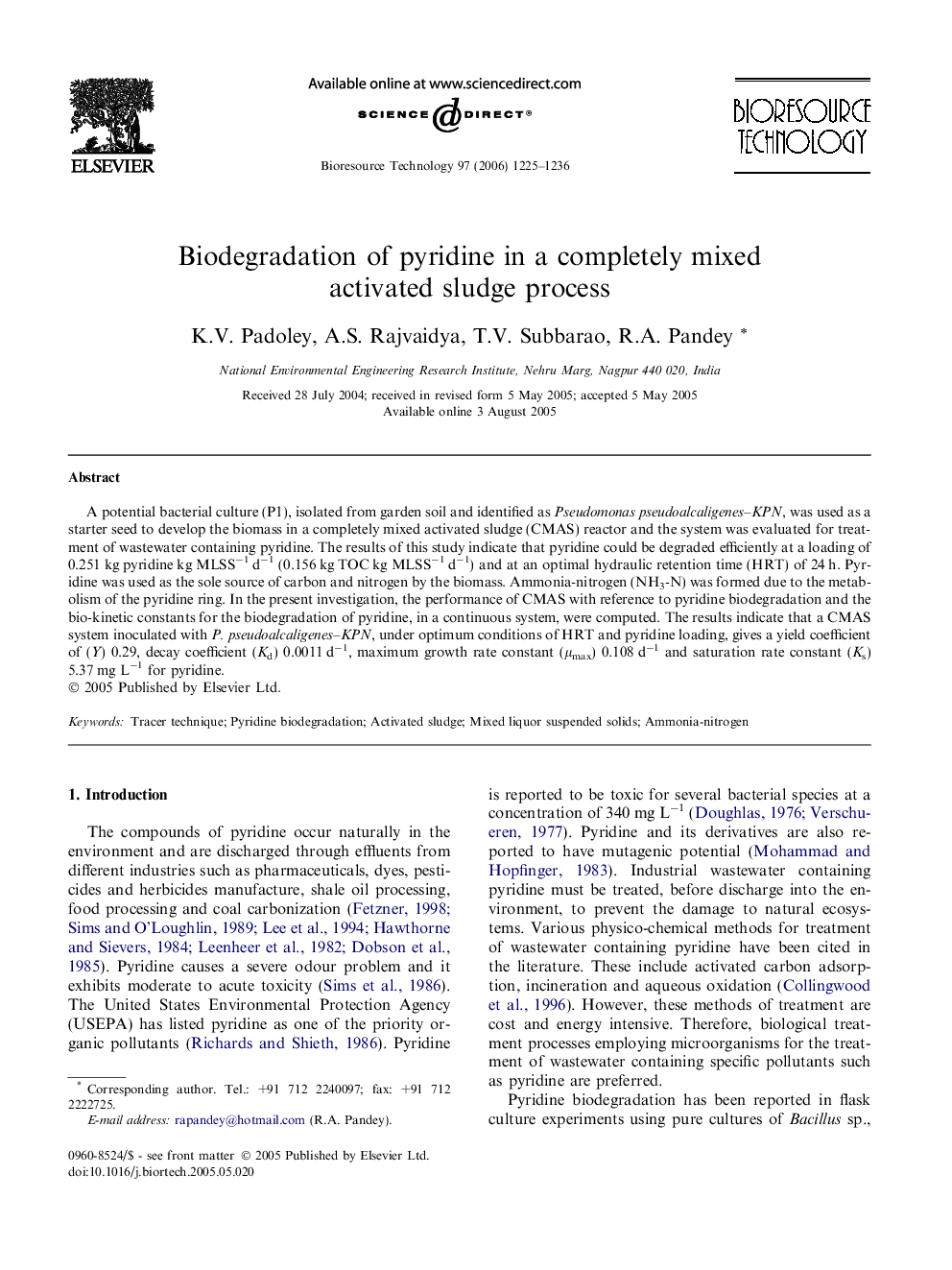| Article ID | Journal | Published Year | Pages | File Type |
|---|---|---|---|---|
| 686740 | Bioresource Technology | 2006 | 12 Pages |
A potential bacterial culture (P1), isolated from garden soil and identified as Pseudomonas pseudoalcaligenes–KPN, was used as a starter seed to develop the biomass in a completely mixed activated sludge (CMAS) reactor and the system was evaluated for treatment of wastewater containing pyridine. The results of this study indicate that pyridine could be degraded efficiently at a loading of 0.251 kg pyridine kg MLSS−1 d−1 (0.156 kg TOC kg MLSS−1 d−1) and at an optimal hydraulic retention time (HRT) of 24 h. Pyridine was used as the sole source of carbon and nitrogen by the biomass. Ammonia-nitrogen (NH3-N) was formed due to the metabolism of the pyridine ring. In the present investigation, the performance of CMAS with reference to pyridine biodegradation and the bio-kinetic constants for the biodegradation of pyridine, in a continuous system, were computed. The results indicate that a CMAS system inoculated with P. pseudoalcaligenes–KPN, under optimum conditions of HRT and pyridine loading, gives a yield coefficient of (Y) 0.29, decay coefficient (Kd) 0.0011 d−1, maximum growth rate constant (μmax) 0.108 d−1 and saturation rate constant (Ks) 5.37 mg L−1 for pyridine.
